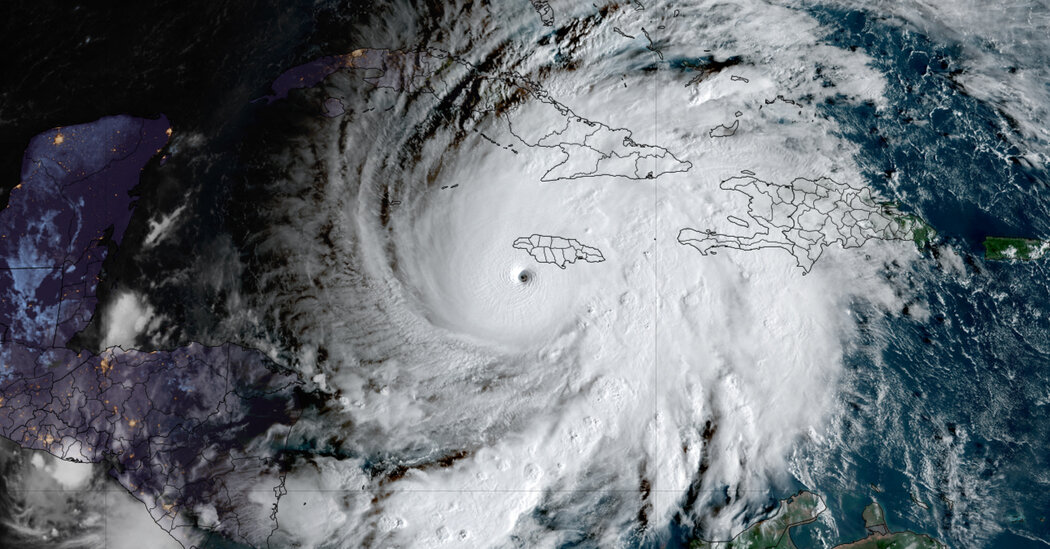Hurricane Melissa is only hours from landfall and is poised to deliver a worst-case scenario combination of hazards when it hits Jamaica. The Category 5 storm’s attributes are comparable to some of the most destructive hurricanes in recent history, including Hurricane Katrina:
-
Intensity: Melissa’s sustained winds of 180 m.p.h. are more potent than the winds during Hurricane Katrina’s maximum intensity, which were 175 m.p.h. before weakening slightly. Melissa’s winds are more intense than those during the peak strength of Hurricane Maria, which weakened to a Category 4 hurricane with 155 m.p.h. winds as it scraped across the island. Melissa’s minimum central pressure has been measured at a staggering 896 millibars. Melissa’s recording in this key measure of intensity is stronger than Katrina’s peak strength in 2005 and it is the fifth-strongest minimum central pressure ever recorded inside an Atlantic storm.
-
Rainfall: Melissa’s slow forward motion is similar to that of Hurricane Harvey in 2017. That hurricane stalled over Texas and dumped more than 60 inches of rain in some areas. This pace ensures prolonged, potentially record-breaking rainfall over Jamaica. It is also reminiscent of Hurricane Dorian, which parked over the Bahamas for days, releasing up to 30 inches of rain, according to NASA. This rainfall, combined with storm surge, produced flooding that reached the second floor of homes in parts of the island chain.
-
Flash flooding and landslides: Jamaica’s steep, mountainous topography is similar to that of North Carolina’s mountains. In such terrain, slow-moving rain events like the remnants of Hurricane Helene, which wiped buildings off their foundation in 2024, can turn catastrophic, triggering flash flooding in narrow river valleys and causing destructive landslides.
Judson Jones is a meteorologist and reporter for The Times who forecasts and covers extreme weather.
The post Melissa’s Winds Are Stronger Than Hurricane Katrina’s Were in 2005 appeared first on New York Times.




